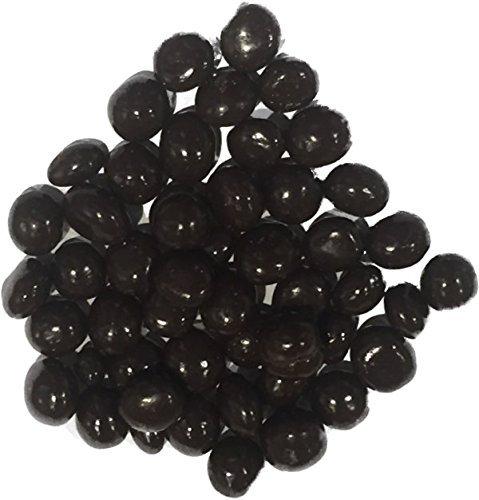Getting Tired Of Types Of Coffee Beans? 10 Sources Of Inspiration That'll Revive Your Love For Types Of Coffee Beans

Types of Coffee Beans
Behind every cup of coffee we enjoy there are carefully graded beans. These beans are analyzed in accordance with their size as well as color, shape, and density.
The AA grade is given to coffee beans that fulfill the above criteria, with the exception that they can't contain more than three defects (quakers). These are typically Kenya AA beans.
Arabica
Arabica coffee beans are also referred to as Coffea Arabicica and are the most popular coffee beans in the world. According to legend, coffee was discovered by an Ethiopian goatherder Ethiopia after he noticed that his herd was more full of energy when they consumed the fruit of the plant. This led him to experiment with roasting the seeds and then brewing the coffee, resulting in the drink that we drink today.
There are a variety of coffee plants, however only two are used to make our favourite brews - arabica and robusta. The former is generally considered superior to the latter and this is evident in the flavor of the finished beverage.
There are a variety of different cultivars of arabica, each every one having their own distinct flavor profile. Typica and Bourbon are two of the most sought-after arabica cultivars. All other arabica varieties were developed from these two varieties either through natural mutations or through deliberate crossbreeding. Scott Labs developed the SL28 cultivar in Kenya and is renowned for its distinct chocolate flavor.

The flavour of a given arabica variety is determined by the climate in which it is cultivated, as well as how it is processed and roasted. The kind of shade the tree gets will have a major impact on the final product.
Robusta
Robusta coffee beans, also referred to as coffee canephora, are the second most widely used kind of coffee. They are the beans used for the majority of instant coffees and contain twice the amount of caffeine as Arabica Coffee Beans. They also are used in the making of many espresso blends particularly for cappuccino, caffe latte and other coffee drinks.
Coffea Canephora is an African plant that was first discovered in Sub-Saharan Africa. It has been cultivated all over the world since. It is able to grow at lower elevations and can tolerate higher temperatures than the Arabica coffee plant, which makes it a much more practical crop for farmers. Vietnam is currently the biggest producer of robusta coffee followed by Brazil and Indonesia.
The robusta plant makes a wonderful coffee however it's not a favorite among cupping enthusiasts because of its bitter taste and burnt-rubber notes. Most large coffee companies use arabica beans in their premium products because it is considered a lower-quality coffee.
However, the demand for gourmet coffee is increasing and small roasters are trying out high-end robusta varieties to make the most of its exceptional qualities. Our Valhalla Java coffee and Death With Coffee coffee are two examples. Both are exceptional robustas that are blended with arabica for the perfect balance of strength and flavour. These coffees are sourced from Uganda where robusta has been grown for hundreds of years. Find out more about them.
Liberica
Liberica coffee beans are scarce and are rarely used around the globe. They are less than 2% of the global coffee consumption and are often overlooked due to the fact that they don't contain the same amount of caffeine as Arabica and Robusta do. These beans have a distinctive flavor that a lot of coffee drinkers find irresistible.
Despite being very rare, Liberica coffee beans are still fairly popular in parts of Asia. The most common place for these beans is in Malaysia and Indonesia where there is a significant Muslim community. The coffee industry in these countries has always been extremely strong and drinking a cup of joe during prayer is a part of the tradition.
The history of Liberica coffee began in the 1890s, when an epidemic of coffee leaf rust wiped out most of the world's arabica crop. This caused coffee producers to look for a robust plant that could flourish in tropical climates. They soon discovered the Liberica.
Liberica plants are resistant to disease and pests which makes them the perfect replacement for the devastated arabica crop. Liberica also has the capacity to thrive in hot temperatures and lower altitudes, which enabled it to flourish in the climate of Southeast Asia. Liberica beans are used to produce most of the coffee in the Philippines and Indonesia.
Excelsa
Although it's rare for coffee lovers to come across excelsa beans in their cups, these more rare beans are beginning to earn a reputation for their unique flavor. According to Komal Sable of South India Coffee Co. who is a fifth-generation farmer of coffee, these beans have a teardrop-like form, but are smaller. But despite this family resemblance it is important to remember that excelsa is technically not a distinct species.
It's a little bit confusing as to how excelsa beans should be classified, and it's this confusion that has been the cause of the beans' insignificant presence in the contemporary world of coffee. Many growers, roasters and brewers aren't aware of how to properly cultivate and use these beans.
It's up to each individual to decide if they like the taste of excelsa. it can take a while to find the perfect blend. The key is to be open-minded and try every type of coffee you can until you find one that you truly love. highest rated coffee beans coffeee.uk 'll get to explore the wide range of options the unique beans have to offer. This is an adventure worth the effort.
